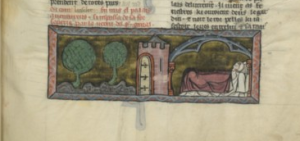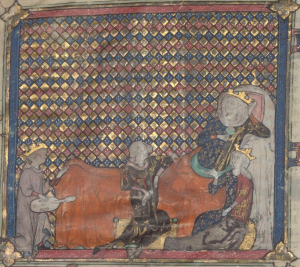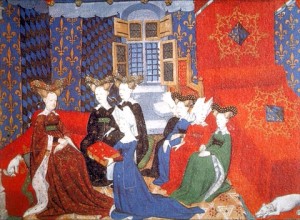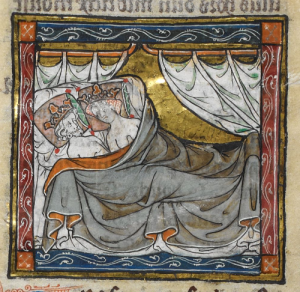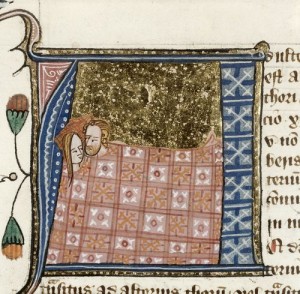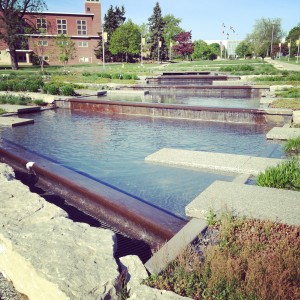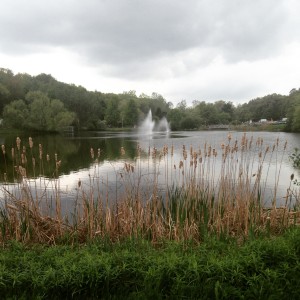In returning to my Crusades research for a conference presentation I gave back in April that I have since then expanded on, I have moved from the Knights to the Assassins, a sect of Saracen followers that have a tumultuous and often misrepresented history. It has not been easy discovering information about the Assassins as so much of it is steeped in myth and legend where the Assassins have taken on a role larger than life and have through a medieval game of telephone become the ultimate enemies of Christendom. However, despite an alarming lack of resources, enough research has shown me that while they were extraordinary for various reasons, they were not the malicious force multiple (perhaps unreliable) sources make them out to be. In fact, as far as the Knights Templars and the Crusades are concerned, they were innocuous to this conflict, and even at times beneficial, as their main targets and principle enemies were other Saracen factions.
Without reiterating the history of the Assassins since multiple other sources have already for the most part done this, I will briefly state that the sect which came to be known as the Assassins was born in the 1090’s as the Ismaili movement split into two. The Nizari Ismailis, one of the two factions, became known during the Crusades as Assassins, which has now been identified quite globally among scholars as a misnomer derived from a western mispronunciation of the term “hashish,” a narcotic this particular group was known for using. So those who were known to consume “hashish” consequently became known as “hashishians,”and if you say this term followed by “assassins,” you should be able to deduce the connection. However, the newly coined pronunciation carried a far more sinister, and not altogether correct connotation as the term assassin became synonymous with murderer.
Obviously referring to an entire group of people as murderers requires at least a bit of an explanation, which can for the most part be grounded in an idea of orientalism that thrived on the “us versus them” mentality and all easterners were quickly relegated into the realm of uncultured barbarian heathens, ready to murder at the least provocation, performing myriad irrational acts of brutality. However, even that did not appease the masses of westerners who wanted to attribute logic to these seemingly unfathomable acts of violence, and thus they drew upon the connection of the assassins to hashish and came to the conclusion that the entirety of the Assassin population was operating under the influence of this narcotic, performing their work while drugged. To further this notion a supreme leader was borne, first Hasan and then the Old Man, who were apparently dictating the Assassins’ killing sprees and obtaining unparalleled devotion from their followers through maintaining and further supplying their addiction. Essentially, by keeping them at all times high, they would continue forth not only under the influence of the drug, but under the leader’s influence as well.
Yet the answer to understanding the Assassins rests outside of these polarizing ideals where we either fully accept or reject the exaggerated accounts. Per usual, a moderate approach is best, so while the Assassins were very much real, and they did commit murders, and were associated with hashish, the most realistic image we can use to define them is of a group outside the traditional Muslim following which in itself already creates a frightening image to those who were Muslim, but even more so to outsiders who did not understand the eastern world. The Assassins dealt with hashish, but were more than likely selling it, or using it as raw material far more than consuming it as a narcotic. They murdered, but in the true understanding of Assassin, meaning high profile personalities, and certainly not in the sense of religious murders we are prone to witness today. They were extremely selective and efficient with their victims who were chosen far more often for political rather than religious reasons. Just like the Crusades were equally political and religious, so was the agenda of the Assassins who were the outcasts of the outcasts and murdered high ranking officials only when needing to demonstrate enough power to be left in peace and continue surviving in a highly competitive land where all corners of the world were converging over a single strip of earth upon which several religions were supposedly founded.
Before continuing further I have to interject with the reminder that this presentation, delivered for the Medieval Worlds in Popular Culture panel as part of the International Popular Culture Association Conference, originally drew the distinction between actual events in the Crusades, namely the Third Crusade, and the mass consumer video game, Assassin’s Creed. Should you be interested in my other preliminary findings, you may read them here and here. However, moving forward, let us remember and pause for a moment upon our video game’s hero, Desmond Miles, the face of the Assassins, who fights solely to maintain his life, wishing he would have been kept out of the Templar’s missions run by Abstergo.
Historically the Assassin’s most notable victim that undoubtedly propelled their name and legend into the western world was the Conrad of Montferrat who had substantial holdings in Jerusalem. His successor, Count Henry of Champagne, nephew to Richard the Lionhearted, was directly responsible for multiple rumors circulating in regards to the Old Man and the Assassins’ narcotic addition as his stories are said to have been told in first person where he served as an eye witness to the sect’s behavior. Here we get the beginnings of a rumor that would circulate for 900 years.
While most documented cases of Assassin activity had little to do with the Crusades, the two groups first clashed in 1106 resulting with the Assassins losing portions of their holdings. Subsequent interaction between the groups, fueled by western fears of assassination attempts lead to further removal of property from the Assassins until their holdings had been so severely depleted it rendered them practically helpless to the ire of the mongols who eradicated them.
Yet as the history of the Assassins comes to an end and a better glimpse into their past is presented (keeping in mind I am only ever so gently glossing over a far more intricate, detailed, and infinitely richer history) the question arises as to how they fit into the depictions we have of the Assassins today in popular culture. What about their past, aside from their dexterity in the act of murder, cast them in such an idolized light?
Since the beginning of this exploration into the Crusades, and the role of the Assassins is based upon understanding the popular video game Assassin’s Creed, I now need to contextualize the game within the myriad facts uncovered. No one is expecting the video game, produced for mass consumption, to conform to historical idiosyncrasies, but more interestingly, it is at the points the video game diverges that pose the most interest. In other words, why does the game vary from history in the ways that it does?
Keeping in mind the majority of the targeted audience for the game resides in the western hemisphere, in order to successfully breach the borders between the east/best dichotomy and introduce a culturally perceived enemy as the main character, the Assassins and Templars would need to receive a contextual make-over. Ironically where the video game seemingly changed the ways in which we understand the conflict between the Knights and Templars it reedified their origins – while the Assassins took center stage as the virtuous heroes of our story, so too the Templars displayed their true colors that were murky and unfavorable at best. Assassin’s Creed is not in fact a reconceptualization of history, but rather an instance in which popular culture finally got history right.
Sources:
Latham, Andrew. Theorizing Medieval Geopolitics: War and the World Order in the Age of the Crusades.
Lewis, Bernard. The Assassins: A Radical Sect in Islam.
Stark, Freya. The Valleys of the Assassins and Other Persian Travels.
